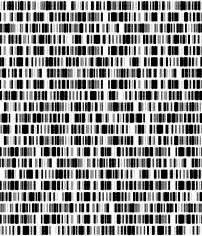New mix for better gene tweaking
 A new genome editing platform has boosted the accuracy of a commonly-used sequencing method.
A new genome editing platform has boosted the accuracy of a commonly-used sequencing method.
Researchers have reported on a new CRISPR-based RNA-guided technology that uses two guide RNAs, significantly reducing the chance of cutting through DNA strands at mismatched sites. The technique reduces the risk of producing unwanted, off-target gene mutations.
“This system combines the ease of use of the widely adopted CRISPR/Cas system with a dimerisation-dependent nuclease activity that confers higher specificity of action” says researcher J Keith Joung, MD, PhD.
“Higher specificity will be essential for any future clinical use of these nucleases, and the new class of proteins we describe could provide an important option for therapeutic genome editing.”
The next-generation editing system is being developed by a team at the Massachusetts General Hospital (MGH) in the US.
Sinces their development in 2013, engineered CRISPR-Cas nucleases – genome-editing tools that combine a short RNA segment matching its DNA target with a DNA-cutting enzyme called Cas9 – have been the subject of much investigation.
CRISPR replaced the earlier ZFN (zinc finger nuclease) and TALEN (transcription activator-like effector nuclease) systems, and have successfully induced genomic changes in several animal models systems and in human cells.
In a Nature Biotechnology paper published in June 2013, Joung's team reported that CRISPR-Cas nucleases could produce additional mutations in human cells, even at sites that differed from the DNA target by as much as five nucleotides.
To address this situation, the investigators developed a new platform in which the targeting function of Cas9 was fused to a nuclease derived from a well-characterised enzyme called Fokl, which only functions when two copies of the molecule are paired, a relationship called dimerisation.
This change doubled the length of DNA that must be recognised for cleavage by these new CRISPR RNA-guided Fokl nucleases (RFNs), significantly increasing the precision of genome editing in human cells.
These new RFNs are as effective at on-target modification as existing Cas9 nucleases that target a shorter DNA sequence.
“By doubling the length of the recognized DNA sequence, we have developed a new class of genome -editing tools with substantially improved fidelity compared with existing wild-type Cas9 nucleases and nickases [enzymes that cleave a single DNA strand],” says Joung, an associate professor of Pathology at Harvard Medical School.
More information is available in the full report, published by Nature Biotechnology.
The research team has also developed software to identify potential target sites for RFNs and incorporated that capability into ZiFiT Targeter, a software package freely available here








 Print
Print